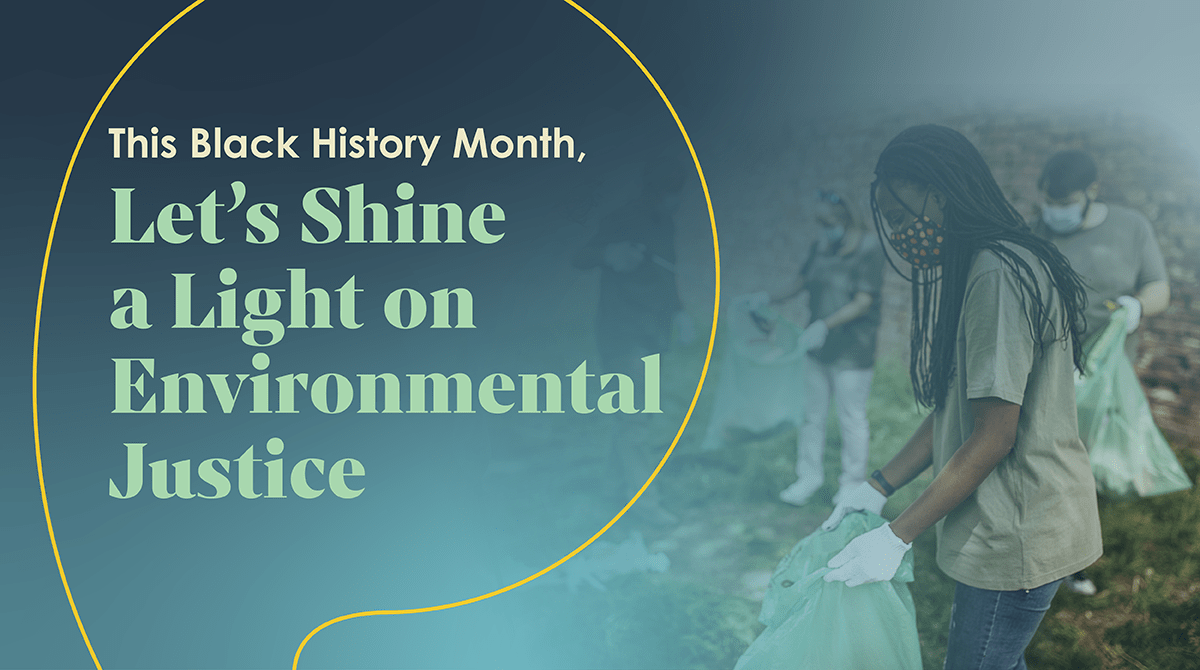
By Vanessa Grzyboski and Kamilah Guiden
Imagine living in an area where the air is thick with pollutants and the water is tainted with toxins. This is the reality for many Black and Brown communities every day. From North Carolina’s industrial pork production hubs to the infamous “Cancer Alley” in Louisiana, environmental injustice disproportionately affects populations who are under-resourced nationwide.
The Health Impact is Real
In North Carolina and beyond, concentrated animal feeding operations (CAFOs) are causing serious environmental issues. These facilities, housing animals for meat, dairy, or egg production, often store waste in open-air pits. Despite efforts to recycle nutrients by dispersing waste over cropland, this practice frequently leads to animal waste, including feces and urine, seeping into the surrounding environment.
Living near CAFOs has alarming health implications for people, including increased rates of asthma, anemia, kidney disease, infant mortality, and infections compared to rural areas without CAFOs. Communities with lower incomes and communities of color are more likely to be located near these industrial sites and, thus, are more likely to experience the associated health impacts.
Another hotspot of industrial activity is “Cancer Alley,” an 85-mile stretch along the Mississippi River that houses about a quarter of the U.S.’s total petrochemical production and 150 oil refineries, plastic processing plants, and chemical facilities. Here, too, the predominantly Black communities bear the brunt of environmental health injustice. The historical aftermath of Jim Crow laws and zoning regulations heighten the health hazards, which include a much higher cancer risk due to toxic air pollution, with estimates ranging from 104 to 105 cases per million—far beyond the 60 to 75 cases per million in predominantly white areas. Despite national improvements in air quality, Louisiana’s progress lags behind the rest of the country, underscoring the urgent need for targeted interventions and systemic reforms.
Disparities Growing Worse Among Communities of Color
Despite the illegality of discriminatory practices such as redlining and Jim Crow laws, the roots of these disparities continue to run deep, confining people of color to impoverished, polluted areas generations later.
Recent findings from the National Minority Quality Health Forum and CEO Roundtable on Cancer shed further light on the worsening disparities communities of color face. More than half (56%) of these communities live near sites emitting carcinogens, heightening their vulnerability to cancer. Black communities are disproportionately impacted, as they are up to 9% more likely to share watershed with industrial facilities and up to 13% more at risk for their community water systems to be near a wastewater treatment plant.
Governmental negligence and mismanagement make matters worse, leading to underinvestment in neighborhoods, high poverty rates, and declining public facilities. The Flint, Michigan, water crisis is one example, where a decision to switch water sources led to severe lead contamination. Similarly, in Washington, D.C., public housing construction near the Kenilworth Dump exposed people to toxic pollution, culminating in tragedies like the death of Kelvin Tyrone Mock. Despite closure, the area remains contaminated with toxic residue to this day.
Climate Change Creating More Urgency
Climate change adds another layer to these already dire circumstances; people who live in under-resourced communities face increased risks as severe weather events become more frequent and intense. Take the predominantly Black neighborhood of Centreville, Illinois, for example. After heavy rainfall and flash floods, residents dealt with immediate flooding and water lingering in their homes and streets for a long time. Neglected infrastructure, a product of structural racism, compounded the issue with sewage backups, further endangering residents’ well-being.
These incidents show an urgent need for comprehensive strategies to address historical injustices and climate change’s looming threats. Without swift action, communities that are disadvantaged will continue to shoulder the biggest burden of environmental crises.
Addressing This Complex Health Challenge Together
The concept of One Health emphasizes the interconnectedness of humans, animals, and the environment, highlighting collaboration across disciplines to address health challenges. However, JPA’s recent report on One Health reveals a troubling trend: stakeholders in animal, human, and environmental health often operate in siloes, while policymakers remain detached from the broader conversation. This disconnected approach makes it even harder to confront complex public health issues.
Tackling these complex challenges necessitates a comprehensive and multi-dimensional approach that includes the following key elements:
- Build local and national coalitions committed to preventing disease and promoting well-being, fostering collaboration among stakeholders from various sectors.
- Prioritize community engagement and empowerment as essential components of the strategy.
- Actively involve those affected by environmental injustice and amplify their voices in policy discussions to ensure that the needs of impacted communities inform solutions moving forward.
- Launch a focused educational campaign aimed directly at highlighting the urgent need to invest in targeted health interventions within affected communities, paving the way for more concrete and meaningful progress.
This year, let Black History Month serve as a reminder: the disparities outlined here are not inevitable outcomes—they are the direct result of systemic injustices that demand our collective attention and action. It’s time to step up together and take decisive action. Our environment isn’t merely a backdrop; it is the very foundation of our health and well-being.
Sources:
- How Black North Carolinians pay the price for the world’s cheap bacon
- Why Louisiana’s Air Quality Is Going From Bad to Worse, in 3 Charts
- Welcome to “Cancer Alley,” Where Toxic Air Is About to Get Worse
- What Is Environmental Racism?
- Unprecedented Rain Highlights Deep Inequities in Centreville
- Flint Water Crisis: Everything You Need to Know
- Advocates Are Sparking a Revolution in Louisiana’s “Cancer Alley”
- Policymakers, Patients, and Industry Join National Minority Quality Forum To Raise Alarm of Cancer Care Disparities in Minoritized Communities to White House Cancer Moonshot
- A ‘Forgotten History’ Of How The U.S. Government Segregated America
- Anacostia: Unbroken
- Healthy People 2030: Environmental Conditions
- Asthma Symptoms Among Adolescents Who Attend Public Schools That Are Located Near Confined Swine Feeding Operations
